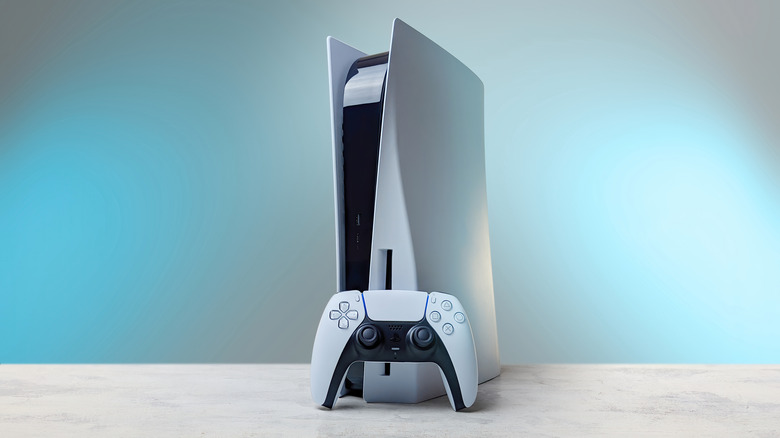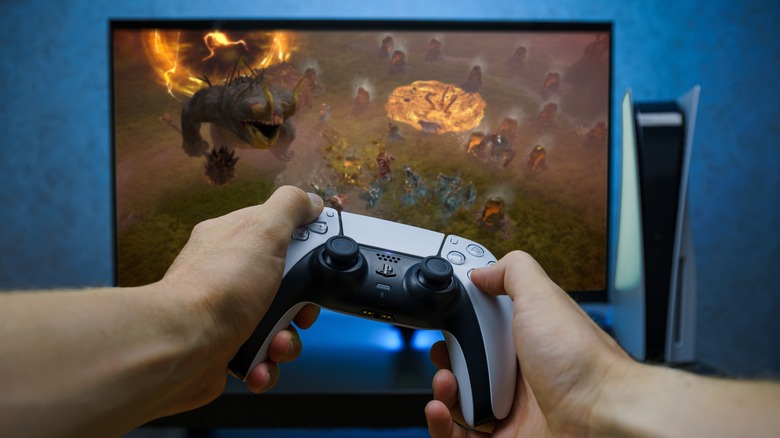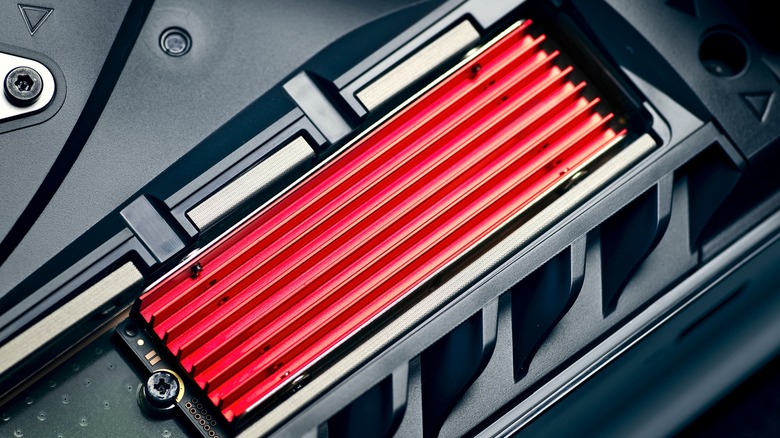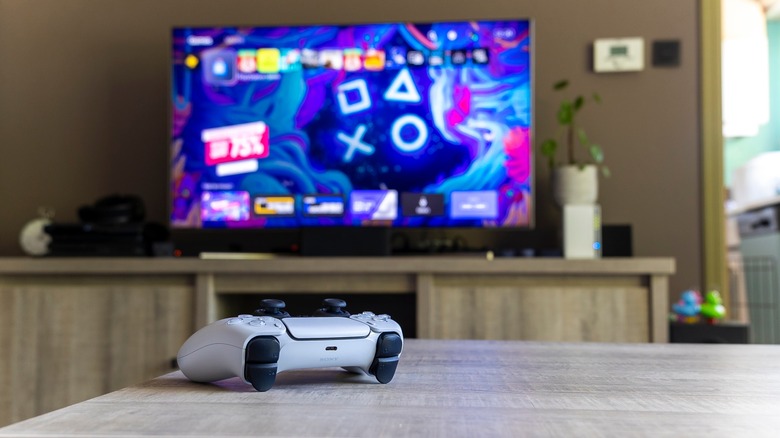PS5 Tips And Tricks For Optimal Gaming Performance
One of the big upshots to console gaming, compared to gaming on a PC, is that the vast majority of your gaming experience is pre-optimized. You don't need to worry about individual components, graphical drivers, or things like that — it's a single machine designed to do exactly one thing: play games.
That said, as game consoles have gotten more advanced and powerful, the lines between them and gaming PCs have blurred slightly. The PlayStation 5, for example, is still a pre-optimized machine for high-spec gaming, but it also offers a variety of options and settings that, when properly utilized, could result in improvements to your gaming experience both subtle and distinct. If all you care about is just playing games as they are, tweaking these settings isn't necessary, but if you want to improve your games' fidelity, run speed, and other parameters, it could be worth digging through the Settings menu.
Use Performance and Resolution Modes
The PS5 prides itself on its graphical and performance outputs, with frame rates and graphical fidelity that would make lower-end PCs jealous. The PS5's AMD GPU and CPU are more than capable of providing both consistent performance and pretty visuals, but if you prefer one over the other, then you can give your PS5 a little nudge in the right direction. Among the PS5's various universal game settings are two rendering modes that you can flip between at your leisure: Performance Mode, which prioritizes consistent frame rates and running speed, and Resolution Mode, which prioritizes model and texture fidelity. You can switch between these two presets in your PS5's settings.
-
From the PS5 Home screen, select Settings.
-
Select Saved Data and Game/App Settings.
-
Select Game Presets.
-
Use the Performance Mode or Resolution Mode toggle to choose your preferred mode.
Bear in mind that these settings only apply to PS5 games. If you're playing an upscaled PS4 game, for instance, the modes won't activate.
Adjust the HDR and VRR settings
A powerful console demands an equally powerful setup to support it. Specifically, if you're playing your PS5 on a high-definition TV with the latest bells and whistles, you can utilize a couple of extra options to improve your performance even further. First, if you've got a TV that supports it, you can use your PS5's innate 4K display functionality to enable High Dynamic Range, better known as "HDR." HDR increases the contrast range that your PS5 can display, making the picture generally more vibrant and colorful.
-
From the PS5 Home screen, select Settings.
-
Select Screen and Video.
-
Select Video Output.
-
Select HDR.
-
Enable On when supported to enable the feature on supported games and on supported displays.
-
Enable Always on to automatically convert all games to HDR output.
In a similar vein to HDR, the PS5 is also capable of Variable Refresh Rate, or "VRR." Again, assuming your TV or monitor is advanced enough to support it, this feature allows the console to adjust the display refresh rate on the fly, switching to higher and lower frame rates as the situation demands.
-
From the PS5 Home screen, select Settings.
-
Select Screen and Video.
-
Select Video Output.
-
Select VRR.
-
Select Automatic to enable VRR for all supported PS5 games.
-
Select Apply to Unsupported Games to apply the effect even to unoptimized games.
Keep in mind that not all games have VRR functionality supported; enabling it for them may improve your image, or it could make things weird-looking.
Regularly clean out digital storage
Your PS5 features onboard digital storage, as well as support for external storage like USB drives and M.2 SSDs. Even if you have a lot of storage space available, though, that doesn't mean it's unlimited. Like any computer, the PS5 needs storage space available not just to store game files and save data, but various temporary and incidental files for regular operation. If your storage is full to bursting, not only can't you download any more games, but your PS5's performance may start to suffer. This is why you should make a habit of cleaning out your PS5's storage by removing any files you don't need. The big space-hoggers are games and apps — if you've finished a game, or just haven't played it in a while, you should delete it from your local storage to free up some space. Here's a quick reminder of how to delete games:
-
From the PS5 Home screen, select Settings.
-
Select Storage.
-
Select Games and Apps.
-
Select Delete Content.
-
Select the data you want to delete, then press the Delete button.
Save data is stored separately, so if you ever want to play a game again, you can just redownload it from the PS Store. Though, on a similar note, you shouldn't download games randomly if you don't actually intend to play them. Stay focused on what you're playing, and your PS5 will thank you.
Keep the console updated
Your PS5 is a living thing, in a sense. Sony is always releasing new updates to the console's drivers, firmware, and other assorted odds and ends, adding new features and refreshing the old ones. The optimal usage of the PS5 comes with the implication that you're using the console in its ideal, up-to-date state. If you're using the console without the right updates, you may be missing out on tweaks and improvements to its functions and operations.
The best approach is to set your PS5 up to automatically update both its internal files and the files of any games you have downloaded. This way, updates will be handled while the console is asleep and everything will be ready to go the next time you boot up. Here's how to set your console software to update automatically.
-
From the PS5 Home screen, select Settings.
-
Select System.
-
Select System Software.
-
Select System Software Update and Settings.
-
Enable Download Update Files Automatically.
-
Enable Install Update Files Automatically.
Next, here's how to set your games and apps to update automatically.
-
From the PS5 Home screen, select Settings.
-
Select Saved Data and Game/App Settings.
-
Select Automatic Updates.
-
Enable Auto-Download.
-
Enable Auto-Install in Rest Mode.
Remember that your game files will only update while the console is asleep, and while the game in question isn't running. You can't have a game session suspended and install an update at the same time.




